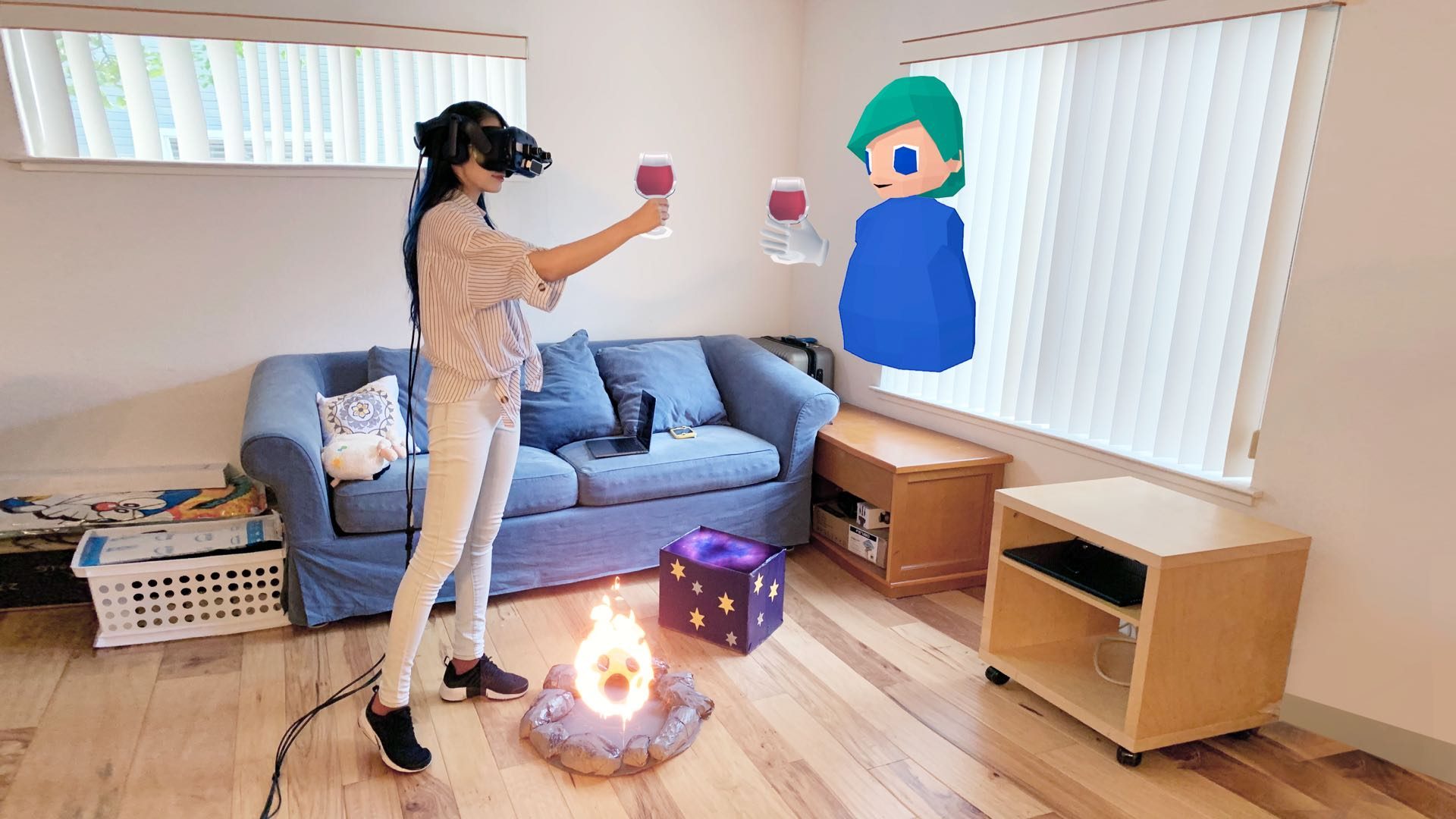Overview
Next AR is an Entertainment Technology Center(ETC-SV) student project creating a multi-player social AR experience for players who are not in the same physical space.
Our goal is to establish social connections and enhance relationships between players in a shared AR world. We will create meaningful activities and intuitive gesture interactions to let players simultaneously interact with each other. Next AR will also design and add several methods that could help players to foster communication and build social bonds in the experience.
What went well
- The excellent design comes out from a close look at daily life.
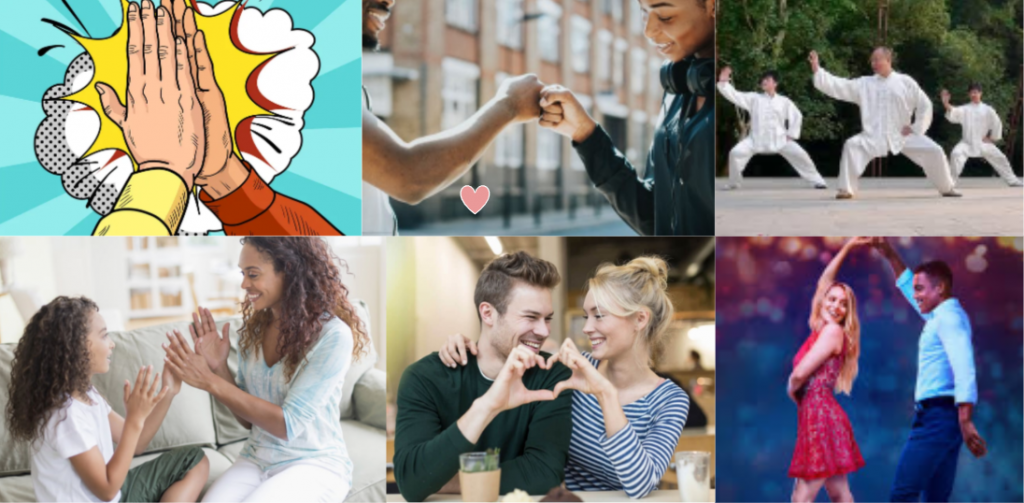
When creating a new design pattern that no one else has used before, it is really important to have an empathic mind to understand/mirror people’s behaviors, motivations, and needs. Our primary design goal was to find social interactions that are both natural and engaging for the multi-users. To discover the fun and engaging social interactions between people, we touched on our research on daily social activities or normal interactions that people do every day. We realized finding activities or interactions that people are most familiar with is the key to create an engaging and fun experience, especially in the AR world.
- Prototypes help a lot in both design and iterations.
Creating prototypes by adopting the agile process allows us to refine the prototypes multiple times and let us find more polished solutions in the end. It lets us understand our design intent also, enables us to combine all the interactions that we make into one experience in the end.
- What makes AR special.
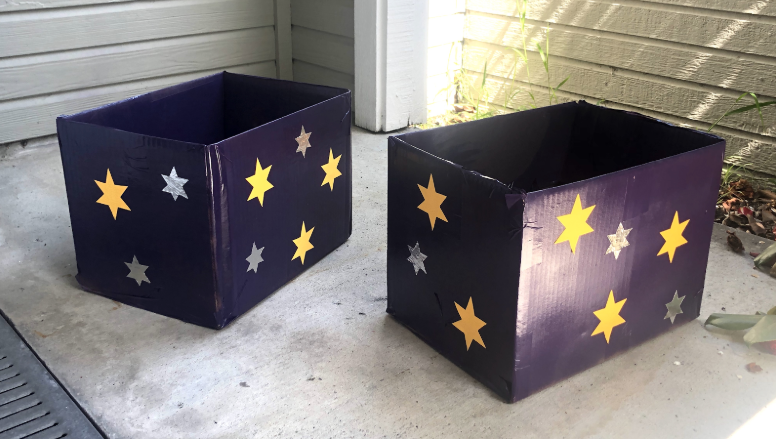
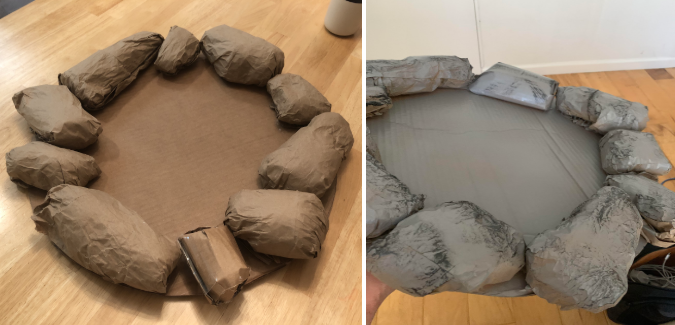
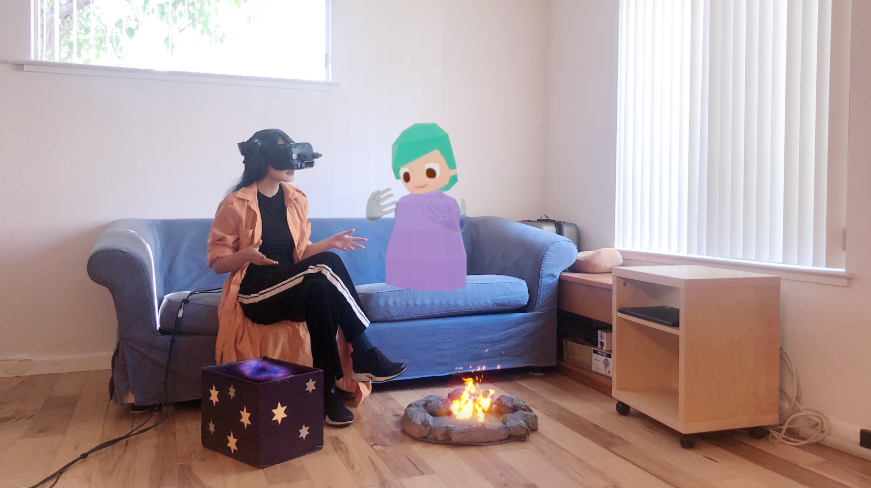
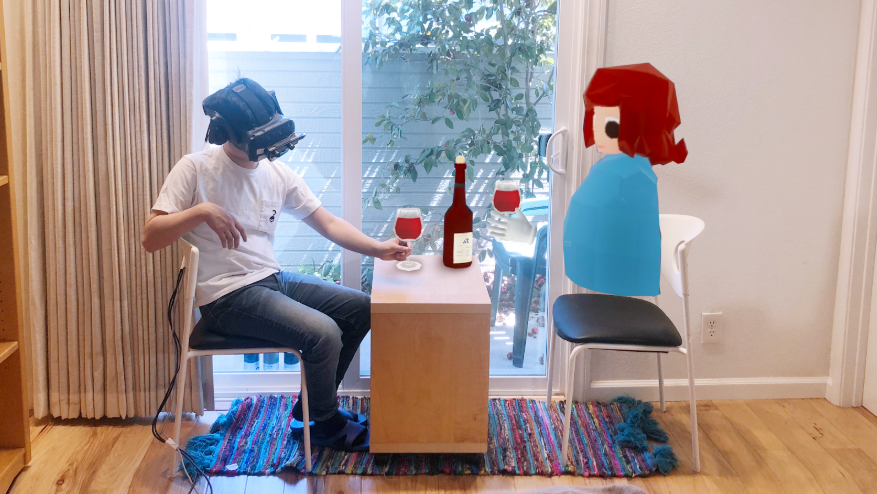
Although the “AR” was one of the requirements we got from our clients, we also worked on figuring out why this project is special in AR very hard during the exploration. As we all know in VR we always have a better environmental quality than AR, so we worked on figuring out how to make this project have a unique AR experience. As we made a physical campfire and magic box, they actually helped a lot to give players an AR feeling, and the magic box also became our core mechanic. The campfire also helped a lot by providing a relaxing scenario and enhancing the storyline, and also supported later activities.
What could have been better
- More playtest will definitely help a lot.

Playtesting as well as user testing is one of the important ways to increase the quality of products. It gives a sense of how easy and pleasant the products are to use from the user’s perspective and allows the team to find opportunity areas to improve the product. Due to the circumstances, we were not able to do actual user-testing in person, but remote video to show for our testers and got a lot of valuable feedback. I was wondering if we can do more in-person user testing, so we can refine our experience in a better way.
- Polishing is always welcome.
There were some features, for example, the construction part could be polished better if we had more time working on the details. From the design point of view, we could set the two players are playing different roles in the construction activities, such as they are responsible for different parts of work, maybe with different sizes or colors of the stone, to foster the social interaction better. And also if we still have more time, it will be great for us to adjust more details about the interactions like passing things between two people, and the construction part. We had worked on passing and catching for a long time, but sometimes small things are hard to pass and easy to be dropped, it would be great if we could polish.
- Hardware does have limitations.
Hardware limitation is much worse than we thought. During the development, we need to tweak the hardware or change our design from time to time. It was hard to have haptic feedback when using leap motion, which makes it difficult to provide a good experience. We should have spent more time on polishing rather than adding new features. Also, we did not have enough time to convert the blueprint logic into C++. Potential performance penalty ahead. Although the hardware limitations are difficult to overcome. A lot of good designs are blocked by these constraints. Maybe we were focused too much on fixing the hardware detection issues. Should have just created a walk around methods in the first place.
Lessons learned
- Scoping and time schedules matter.
Having an empathic mind as well as applying the agile process is one of the biggest parts that we were able to generate our ideas into a feasible scenario. When it comes to creating engaging and fun experiences that users can enjoy together, scoping and time schedules are really important to prevent waste of time on unnecessary things. I mean every time and process we had was really valuable, but having the right scoping and understanding limitations for-front would really help for building a robust experience in the end.
Controlling the scope should always be put into mind during the whole development progress. During the beginning of brainstorming, we always got millions of ideas and delight points about the whole experience, we’d like to put many good points into it. As time went we gradually narrowed down ideas and iterations based on prototypes and playtesting. After each half, soft presents we also felt ambitious and got many inspirations from the feedback, but as we made plans, keep the scope of one semester in mind helped us a lot to have a clear image of our output and ensure we finished the project on time.
- Technical tips
- Networking should be considered in an early stage. Once part of the project needs to be online, the whole project has to get redesigned to support network features.
- Physics and simulations are difficult to implement to interact with multiple players. Most of the time we need to design a dedicated model to support specific requirements.
- Data exchange through the network is always expensive and unreliable. Think about reducing the amount of data being transferred from the beginning, and if necessary we can sacrifice some precision by compressing data. Also, try to do most things locally if it is possible so data exchanging can be totally eliminated.
- It’s important to keep the hardware limitation in mind. It is better to focus on using the most stable feature provided by the devices and workaround where the hardware doesn’t work well.
- A standard asset pipeline is necessary. Every member should have a common understanding of how to create assets and commit to the standard.
- Need to set up coding principles and architecture before the actual development process begins.
- Enforcing the comments for all codes and blueprints to make them more readable.
- Finally, planning everything ahead is extremely important. Something you think is easy to do may take away a lot of time in the end. Nothing is easy when it comes to professional level development.
CONCLUSIONS
At the almost end of the semester, we are happy to see that we almost achieve our goals for this project. We conduct a social AR experience, which did well in setting up social connections and make it a special experience in the AR field. With this semester-long exploration, we worked on finding could the AR technology nowadays help people in a social way. And as we learned from the previous pass-through AR projects, we hope our project could also give inspirations for further ETC projects.

